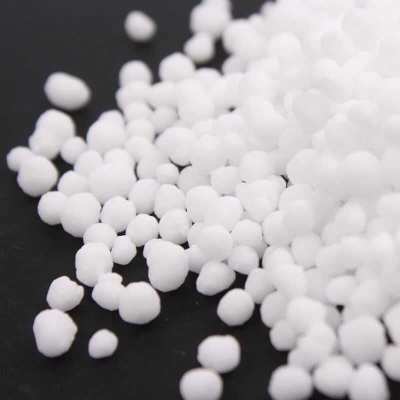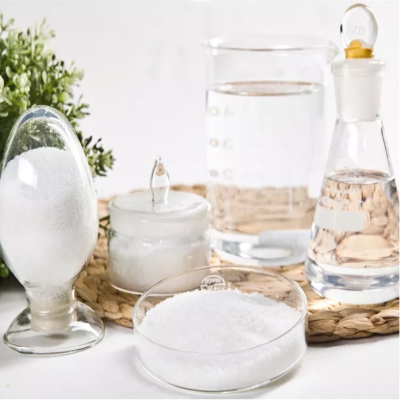-
Categories
-
Pharmaceutical Intermediates
-
Active Pharmaceutical Ingredients
-
Food Additives
- Industrial Coatings
- Agrochemicals
- Dyes and Pigments
- Surfactant
- Flavors and Fragrances
- Chemical Reagents
- Catalyst and Auxiliary
- Natural Products
- Inorganic Chemistry
-
Organic Chemistry
-
Biochemical Engineering
- Analytical Chemistry
- Cosmetic Ingredient
-
Pharmaceutical Intermediates
Promotion
ECHEMI Mall
Wholesale
Weekly Price
Exhibition
News
-
Trade Service
Researchers at the University of Minnesota, a member of a national team at the Center for Sustainable Polymers, have discovered a better way to recycle a multifunctional plastic material called polyurethane that prevents the material from turning into waste
.
Some attempts in the past to recycle polyurethane waste have led to a decline in material quality
.
Now, researchers have found a way to use an innovative method to recycle waste polyurethane into materials of the same or even higher quality
.
The results of their research are reported in the journal ACS Central Science published by the American Chemical Society
.
Marc Hillmyer, director of the Center for Sustainable Polymers at the University of Minnesota and professor of chemistry at the University of Minnesota, said: "We are very excited about this new research at the Center for Sustainable Polymers because of the recycling of polyurethane materials that are usually considered waste.
Has great potential
.
" It also shows how to apply a powerful combination of polymer chemistry and polymer processing to help solve environmental problems
.
"Polyurethane is all around us
.
Polyurethane can be found in mattresses, insulating materials, footwear, building materials, car suspension systems, carpet padding, and many other products
.
The wear and replacement of these products generates a lot of waste and creates In response to the demand for new polyurethanes, these polyurethanes are usually made of toxic chemical components
.
Traditional polyurethanes cannot be recycled simply by heating, because the material is composed of a polymer network that is held together by strong chemical bonds and heated.
when not flow
.
in contrast, the polyurethane can not be downgraded to a useful material by mechanical or chemical recovery process
.
other methods make the innovative past the polyurethane type and having a breakable recombinant crosslinking, so that it can be recycled
But this method requires the industry to commercialize new starting materials, and it will not solve the problem of traditional waste lingering in the landfill
.
These methods have not been tested on foam (foam is a very special kind of polyurethane product).
Common form)
.
In this new study, researchers from the University of Minnesota and Northwestern University grind polyurethane foam or film, and then mix the particles in a catalyst solution
.
After drying, these particles are compression molded to form a new film
.
The compression-molded film formed a good quality product, but the compression-molded foam produced cracking and uneven material
.
The researchers solved this problem by developing a twin-screw extrusion process that improved the mixing and air removal of recycled foam compared to compression molding methods
.
They said that this new method can be used to continuously recycle large amounts of polyurethane waste currently in landfills and newly generated
.
"During the extrusion process, the polyurethane flows like a liquid under the action of a catalyst, and the air is also removed
.
" said Christopher Ellison, a professor of chemical engineering and materials science at the University of Minnesota and one of the senior authors of the study.
The reaction processes that have been used for other purposes in the plastics industry are similar, which means that the technology can have an impact quickly
.
" This research was mainly funded by the National Science Foundation through the Center for Sustainable Polymers
.
The authors of the study are from the Department of Chemical Engineering and Materials Science at the University of Minnesota, including associate professor Christopher J.
Ellison, postdoctoral assistant Kailong Jin, and undergraduate student William Dean
.
Authors from the Department of Chemistry at Northwestern University include Professor William R.
Dichtel, PhD student Daylan T.
Sheppard, postdoctoral researcher Leslie S.
Hamachi, and visiting predoctoral scholar David J.
Fortman
.
Fortman is also a former graduate researcher in the Department of Chemistry and Chemical Biology at Cornell University
.
.
Some attempts in the past to recycle polyurethane waste have led to a decline in material quality
.
Now, researchers have found a way to use an innovative method to recycle waste polyurethane into materials of the same or even higher quality
.
The results of their research are reported in the journal ACS Central Science published by the American Chemical Society
.
Marc Hillmyer, director of the Center for Sustainable Polymers at the University of Minnesota and professor of chemistry at the University of Minnesota, said: "We are very excited about this new research at the Center for Sustainable Polymers because of the recycling of polyurethane materials that are usually considered waste.
Has great potential
.
" It also shows how to apply a powerful combination of polymer chemistry and polymer processing to help solve environmental problems
.
"Polyurethane is all around us
.
Polyurethane can be found in mattresses, insulating materials, footwear, building materials, car suspension systems, carpet padding, and many other products
.
The wear and replacement of these products generates a lot of waste and creates In response to the demand for new polyurethanes, these polyurethanes are usually made of toxic chemical components
.
Traditional polyurethanes cannot be recycled simply by heating, because the material is composed of a polymer network that is held together by strong chemical bonds and heated.
when not flow
.
in contrast, the polyurethane can not be downgraded to a useful material by mechanical or chemical recovery process
.
other methods make the innovative past the polyurethane type and having a breakable recombinant crosslinking, so that it can be recycled
But this method requires the industry to commercialize new starting materials, and it will not solve the problem of traditional waste lingering in the landfill
.
These methods have not been tested on foam (foam is a very special kind of polyurethane product).
Common form)
.
In this new study, researchers from the University of Minnesota and Northwestern University grind polyurethane foam or film, and then mix the particles in a catalyst solution
.
After drying, these particles are compression molded to form a new film
.
The compression-molded film formed a good quality product, but the compression-molded foam produced cracking and uneven material
.
The researchers solved this problem by developing a twin-screw extrusion process that improved the mixing and air removal of recycled foam compared to compression molding methods
.
They said that this new method can be used to continuously recycle large amounts of polyurethane waste currently in landfills and newly generated
.
"During the extrusion process, the polyurethane flows like a liquid under the action of a catalyst, and the air is also removed
.
" said Christopher Ellison, a professor of chemical engineering and materials science at the University of Minnesota and one of the senior authors of the study.
The reaction processes that have been used for other purposes in the plastics industry are similar, which means that the technology can have an impact quickly
.
" This research was mainly funded by the National Science Foundation through the Center for Sustainable Polymers
.
The authors of the study are from the Department of Chemical Engineering and Materials Science at the University of Minnesota, including associate professor Christopher J.
Ellison, postdoctoral assistant Kailong Jin, and undergraduate student William Dean
.
Authors from the Department of Chemistry at Northwestern University include Professor William R.
Dichtel, PhD student Daylan T.
Sheppard, postdoctoral researcher Leslie S.
Hamachi, and visiting predoctoral scholar David J.
Fortman
.
Fortman is also a former graduate researcher in the Department of Chemistry and Chemical Biology at Cornell University
.







